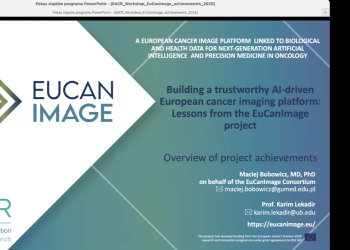Have you ever thought what really drives research? Most people, not involved in this area, think that for successful research you need good logic and scientific thinking, the ability to analyse data and drive conclusions from what you find. Others may think that the most important thing is equipment and reagents, high quality materials, and sophisticated methodology that enable complicated experiments and facilitate understanding of subtle mechanisms of disease. Some may say that the most important is collaboration and creating teams of talented researchers that can complement one another. That is all right. All those constituents are necessary for successful research as different ingredients are necessary for a tasty pie. But there is always a secret ingredient, something, that makes research unique. That is curiosity. Simple curiosity that makes someone think scientifically, buy reagents and gather collaborators. Something that is always at the heart of the research.
Curiosity drives people from the earliest age. Why do you think children explore the world? Essentially, it is the same as doing science. They do that not because of salary, or position, or answering important questions. They do that from pure curiosity. That is how it begins. And those who sustain this curiosity in later years can then become scientists. Interestingly enough, all other aspects of research, like way of thinking or doing special techniques, can be taught. Those are methods, instruments, but the flash, the fire that makes us use those instruments is curiosity. And if we dig even deeper, curiosity is present already in animals. I am sure that anyone who has pets will agree with me. Animals definitely exhibit curiosity when try to find or reach something. So curiosity can be considered an evolutionary old feature that is still conserved and well developed in some humans.
Unfortunately, many people lose this feature with age. They are put into frames of rules, of doing what is considered right in the specific culture. Sometimes being curious may seem not “adult type” of behaviour. People try to hide their curiosity, become ashamed of asking questions that may not be practically relevant or useful. That destroys our sense of discovering new things, that intimate feeling of joy when you find out something you were wondering about, even if you do not know how you can use this. Our “inner child” able to do something just for pleasure and from pure interest is, in fact, that boss that drives the best research. Most people not involved in research assume that scientists are serious people, thinking about serious things. Yes, that is, of course, true, but in every serious scientist there should be a curious child who is ready to discover things because he or she just gets pleasure of the process. I believe that even in our world of aiming for results (grants, publications, talks at big congresses, money – choose whatever you wish) this curiosity inspiring research for pleasure is still much more important than all other motivations. And we should try to keep a child inside us alive to be really innovative and productive in science.
And as this “inner child” sometimes want to do something unusual (never forbid that, research is always doing something unusual!), why not to try to make a poem about curiosity:
From early childhood up to being an adult
In different areas that constitute our lives,
Just curiosity drives people to find out
How world is built and how we can survive.
It’s moving forward science and research,
Despite all difficulties, troubles and mistakes,
It poses questions at the unknown edge,
Make eyes shine up with inspiration flames.
And then as children grow, at older age
As scientists make experiments, and thus
The great ideas come onto the stage,
Discoveries, that later save the lives.
Who stays a child inside that can survive
All hurdles, barriers, obstacles; push bars
In science and research, in all our lives.
The “inner child” with curiosity moves us.
And as research is something that we do,
Let curiosity of “inner child” move you.
About the author:
Marina Puchinskaya MD is an oncologist from Kravira Medical Centre in Minsk, Belarus. She is also a PhD student studying epithelial-to-mesenchymal transition, cancer stem cells features and their hormonal regulation in prostate cancer. She likes to think about some kind of philosophy in science and to find parallels between research and other aspects of life. She is deeply convinced that combining both clinical oncology and lab research is essential for success in beating cancer. “Or at least I love doing that,” she says, “And passion is already a reason to proceed”.
About this article
This is one of our shortlisted entries for the 2024 EACR Science Communication Prize themed around our #KeepResearchCurious campaign. Choosing a winner was incredibly difficult and we’re delighted to share our shortlist with you.
The header image of this article was created using AI.








